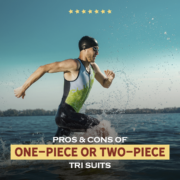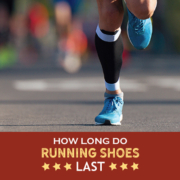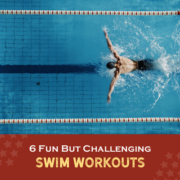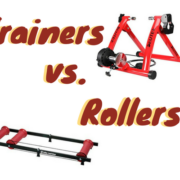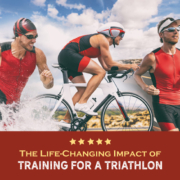Pro and Cons of One-Piece and Two-Piece Tri Suits
One of the first decisions you’ll need to make when doing a triathlon is what type of suit to wear. Do you go for a one-piece or two-piece? There are pros and cons to both options, so it’s important to weigh up all the factors before making your decision. In this blog post, we’ll take a look at some of the key differences between one-piece and two-piece suits, as well as the advantages and disadvantages of each option. So read on if you want to find out more!
What is a Tri Suit?

A tri suit is a garment designed specifically for triathletes to be worn during the swim, bike, and run. They are made of a swimsuit-like material that dries quickly during your transition to the bike. They also make riding more comfortable with built-in pads that you won’t even notice during the run. It usually has built-in pockets so that you can carry some nutrition with you as well.
Most importantly, the suit allows for a total range of movement so you can wear the suit for the entire tri. A tri suit is an element of the basic triathlon gear you need, so keep reading to understand the differences between a one-piece and two-piece tri suit.
Two-Piece Tri Suit
A two-piece tri suit is a set of tri shorts and a tri top. Some athletes prefer a two-piece because they offer a few advantages.

For example, a two-piece is less likely to restrict your range of motion from being too tight on your shoulders and allow for natural movement. The two-piece suit also tends to feel cooler than a one-piece, due to the fact your mid-drift can be exposed.
A two-piece suit is also great for athletes who may require different-sized clothing for the upper and lower parts of their body. You can also usually find more options for the length of shorts. For women, you can find inseams from anywhere from 5 inch to 8 inch. Many prefer a shorter short length for short distances or training while a longer length can help prevent chaffing on longer distances.
One drawback is the two-piece can be less aerodynamic during the bike portion if the suit bunches up. Leaning too far forward on your bike can also cause the back of your tri top to rise up and lead to exposed skin. This is not ideal to protect your skin if you were to fall on the bike course or raise the risk of getting a sunburn.
One-Piece Tri-Suit
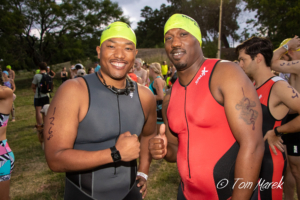
One-piece tri suits are more commonly preferred by most athletes for simplicity. A one-piece suit typically has some compression built-in, making the suit more aerodynamic for athletes who opt for a one-piece. Athletes also say there’s less chafing with a one-piece because there are fewer seams in the suit.
Many prefer a one-piece because you don’t have to worry about your shirt riding up or your shorts moving down exposing your mid-drift. Less shifting around = more time saved and a more comfortable experience.
Lastly, a one-piece suit is a better option if you will be wearing a wet suit during your race again because you don’t have to worry about anything moving where it shouldn’t when you go to peel off your wetsuit.

One drawback of a one-piece suit is the material the suit is made of can cause you to feel warmer throughout the race. This is important to take this into account depending on which tri distance you complete and what time of year your race takes place. You can look for a one piece that has a zipper for venting if needed. The other drawback is that you have to find a suit that works with your torso length, finding your “dream” suit can take longer with more trial and error.
At the end of the day, comfort is most important when choosing the best tri suit for you, if you decide to wear one at all. Hopefully, now you have the knowledge and tools you need to get yourself the perfect suit for your upcoming tri!

